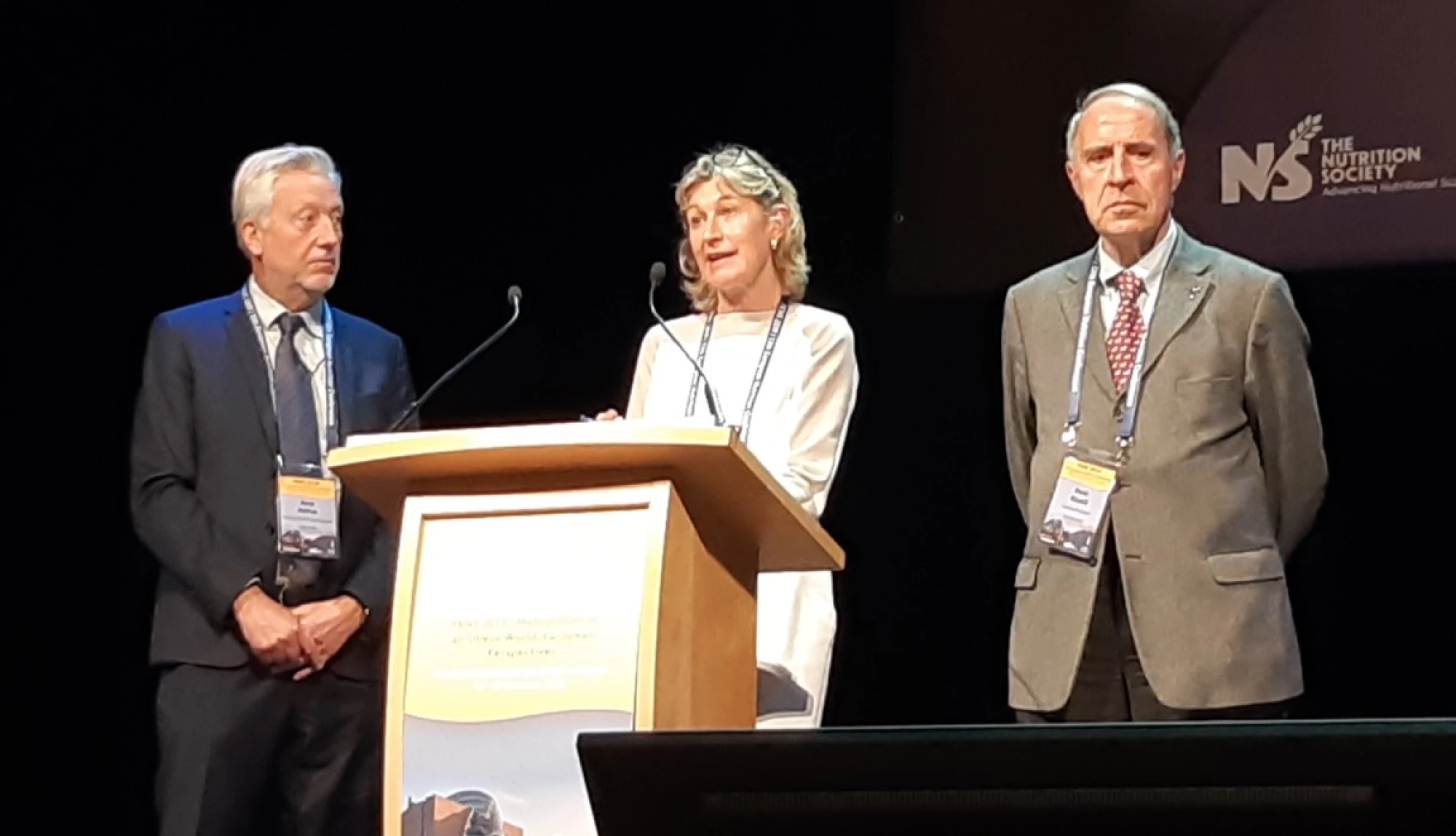Beyond nutrients: health effects of the dairy matrix
Metabolic health: the impact of the dairy matrix
Professor Arne Astrup, Department of Nutrition, Exercise and Sports, University of Copenhagen
Dairy matrix effects on musculoskeletal health
Professor René Rizzoli, University Hospitals of Geneva
Read the abstracts of Profs Astrup and Rizzoli’s presentations here. Click here for their biographies.
Prof Arne Astrup from the University of Copenhagen explained:
“The impact of dairy foods on cardiometabolic health can be likely be attributed to dairy food matrix effects with the interaction of nutrients including protein, calcium, SCFA (short chain fatty acids) in the case of fermented dairy, and perhaps peptides and phospholipids. The effects are different to what would be expected solely on the basis of the nutritional content. Cheese is a good example, despite its saturated fat and salt content, the majority of studies report that cheese consumption does not increase the risk of CVD and may, in fact, be beneficial.
Recent WHO guidance on fatty acids fails to take into account the importance of the food matrix and a new approach is needed in this respect. A diet including dairy, particularly yogurt and cheese, should be recommended for everyone to prevent and manage type 2 diabetes and cardiovascular disease. The low–fat version of these dairy foods might by helpful for non–diabetic overweight and obese individuals, whereas emerging evidence suggests the full–fat versions are optimal for people who already have type 2 diabetes.”
Prof René Rizzoli from the University of Geneva explained that a dairy food matrix effect is also apparent on musculoskeletal health impacting, for example, optimal bone growth and for maintaining the integrity and function of bone and skeletal muscles:
“In a balanced western diet, dairy products are responsible for about 50 to 70% of total dietary calcium intakes and 20–28% of total protein intakes but they also provide other important nutrients, and probiotics in fermented dairy, that may work together in the dairy matrix with positive effects on musculoskeletal health. Prebiotics can modify gut microbiota, increase calcium absorption and enhance bone growth, in both animals and humans. In addition to providing calcium and protein, fermented dairy products are a source or probiotics.
The matrix effect is demonstrated in a study which reported that bone loss from the radius was attenuated in yogurt consumers independently of total calcium and protein intakes, total dairy product intake, or physical activity. Dairy foods have been shown to be a cost–effective way of reducing fracture risk”.
A summary of the matrix effect of dairy food is available here.
